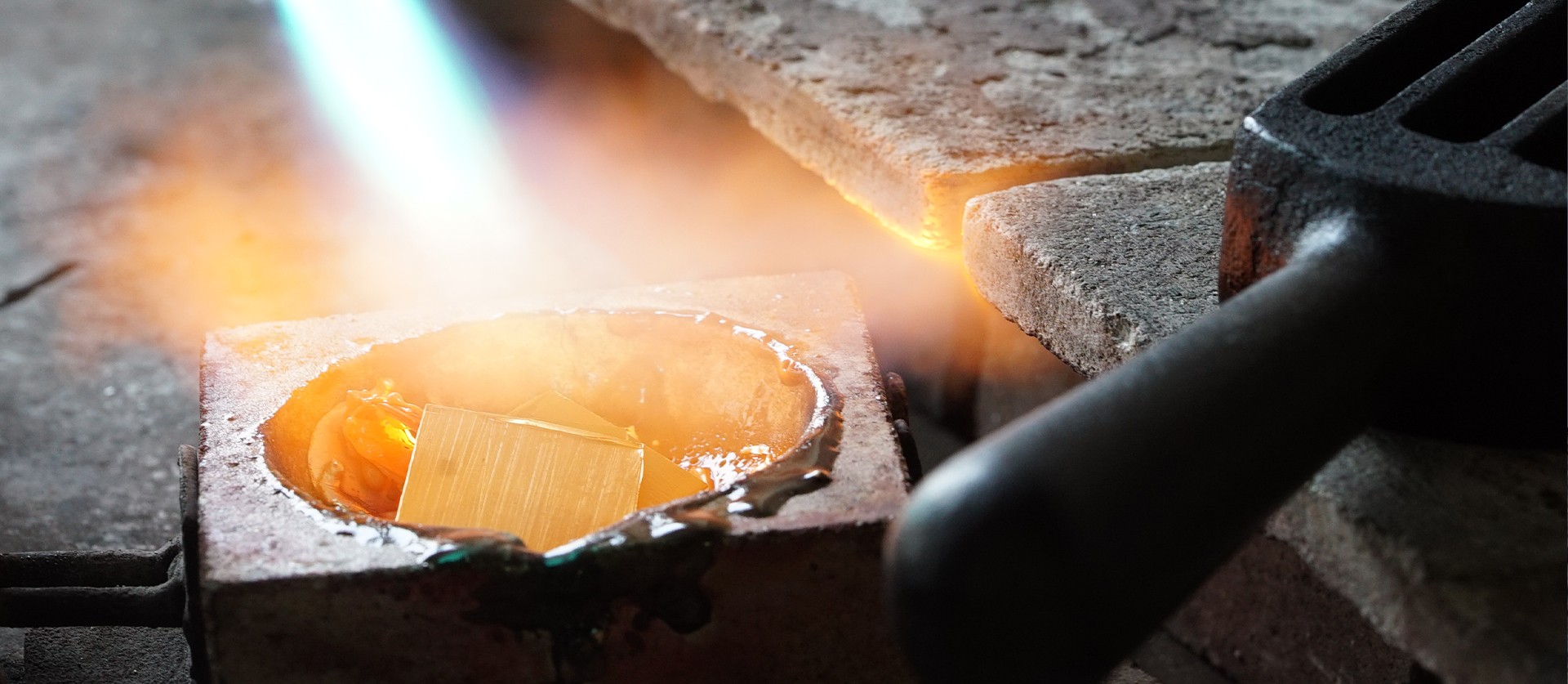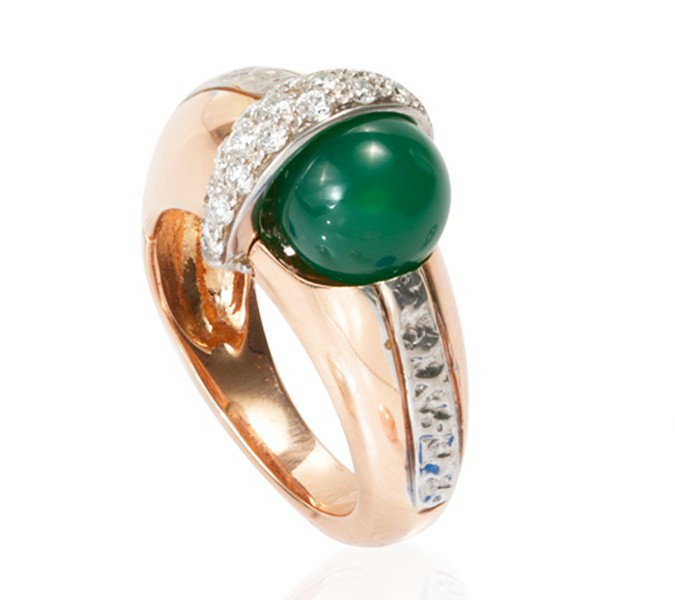Not just Yellow, White and Rose. All the Colors of Gold

How many colors of gold are there? The most common answer to this question is three: yellow gold, white gold and rose gold, the most widespread in jewelry. In reality, there are nine in total, although some of these are rarely used, and they include shades that range from red to green, from purple to blue, up to black. In its natural state, gold is yellow: the other colors (except for black, which requires other treatments) are obtained by combining gold with other metals.
How to Measure the Purity of Gold
The gold used in jewelry is always a metal alloy: pure gold, in fact, is too soft and cannot be worked to create jewelry. The purity of gold is measured in carats, which indicate the amount of pure gold present in the alloy: 100% pure gold is 24 carats and is used for ingots, while 22-carat gold (91.7%) is used to mint coins. The most common gold for jewelry is 18 carats (75%), but 14-carat gold (58.3%) is also used. The minimum number of carats in commercial jewelry varies according to countries: in Italy it is 8 carats (33%), while for example in the United States gold is defined as such if it has at least 10 carats (41.7%)
18-carat gold, therefore, is composed of 3 quarters pure gold and 1 quarter of another metal, or a composition of multiple metals in different percentages. It is these metals that give gold its different shades. Let us therefore see how all the colors of gold at 18 carats are obtained.
The 9 Colors of Gold
The Classic Colors
Yellow gold
It is the color most similar to that of natural gold and is the most traditional and beloved for precious items. Yellow gold is composed of 75% gold, combined with silver (7-12%) and copper (13-18%): the percentage of these two metals depends on the intensity of yellow desired. By increasing the amount of silver, in fact, the color of the gold will be lighter.
White gold
In second place, among the most widespread colors of gold in jewelry, is white gold, obtained with 25% nickel, silver or palladium. The alloy with nickel is more resistant, while the one with palladium makes it more malleable. To increase the brilliance of white gold jewelry, they are often subjected to a rhodium plating treatment.
Rose gold
Much appreciated in 19th-century Russia, rose gold had then disappeared from modern jewelry, but has been back in fashion for several years. It is obtained by combining yellow gold with 20% copper and 5% silver.

The Unusual Ones
Red gold
It is used less than rose gold, but the composition is similar: the percentage of copper changes, rising to 25% and therefore giving a more intense color.
Green gold
An apparently unusual color, but already known in antiquity: to obtain green it is enough to alloy pure gold with silver and copper, in the same quantity (12.5% each). By modifying the percentages of silver and copper and adding a small amount of cadmium, the shade of green becomes more intense.
Purple gold
Also called amethyst gold, it is an alloy of gold and aluminum. Purple gold is not often used to create jewelry, however, because, due to the melting and working process of the metals, it is much more fragile than other types of gold.
Dark and Intriguing: the New Colors of Gold
Blue gold
From the union of gold and iron comes blue gold: the shade derives from a thermal treatment that oxidizes the iron atoms on the surface of the gold. Blue gold can also be obtained from an alloy with two rare metals, gallium and indium. In this case too, it is a fragile material.
Gray gold
It is obtained by combining gold and palladium, or silver, with the addition of manganese, which gives the metal the gray shade, much appreciated in contemporary jewelry.
Black gold
It is the only one, among the colors of gold, that is not obtained from an alloy with other metals, but from chemical treatments: the surface of the gold, in fact, is darkened with a galvanic bath that uses ruthenium, chromium or cobalt. More recently, the same result has been achieved through the creation, thanks to 3D and laser technologies, of metallic nanostructures that are fixed on the gold.